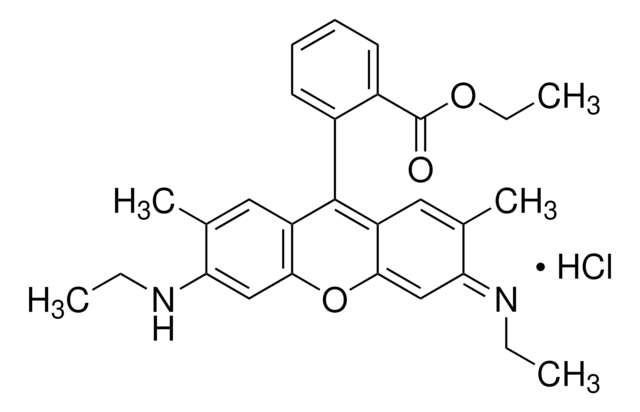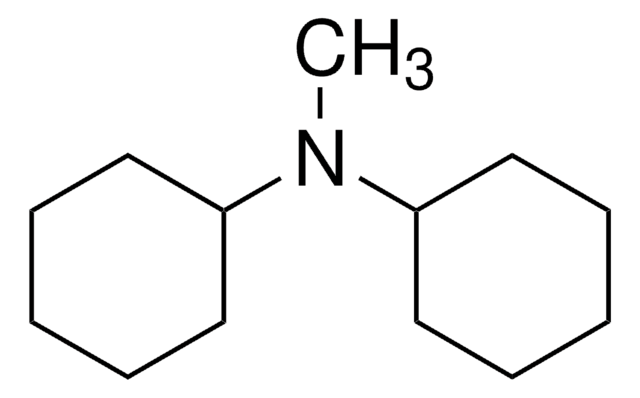41690
4,N,N-Trimethylaniline
≥98.5% (GC)
Synonyme(s) :
4-Dimethylaminotoluene, N,N-Dimethyl-p-toluidine
About This Item
Produits recommandés
Densité de vapeur
>1 (vs air)
Essai
≥98.5% (GC)
Forme
liquid
Limite d'explosivité
7 %
Indice de réfraction
n20/D 1.546 (lit.)
n20/D 1.547
pb
211 °C (lit.)
90-92 °C/10 mmHg (lit.)
Densité
0.936 g/mL at 20 °C
0.937 g/mL at 25 °C (lit.)
Groupe fonctionnel
amine
Chaîne SMILES
CN(C)c1ccc(C)cc1
InChI
1S/C9H13N/c1-8-4-6-9(7-5-8)10(2)3/h4-7H,1-3H3
Clé InChI
GYVGXEWAOAAJEU-UHFFFAOYSA-N
Vous recherchez des produits similaires ? Visite Guide de comparaison des produits
Catégories apparentées
Description générale
Application
- Charge-transfer complexes for redox polymerization: 4,N,N-Trimethylaniline used for on-demand amine/peroxide redox polymerization. This research offers a new perspective on the use of 4,N,N-Trimethylaniline in creating controlled polymer structures, which is crucial for various industrial and pharmaceutical applications (Garra et al., 2018).
Attention
Mention d'avertissement
Danger
Mentions de danger
Conseils de prudence
Classification des risques
Acute Tox. 2 Inhalation - Acute Tox. 3 Dermal - Acute Tox. 3 Oral - Aquatic Chronic 3 - Carc. 1B - Repr. 2 - Skin Sens. 1 - STOT RE 2 Oral
Organes cibles
Reproductive organs
Code de la classe de stockage
6.1A - Combustible acute toxic Cat. 1 and 2 / very toxic hazardous materials
Classe de danger pour l'eau (WGK)
WGK 3
Point d'éclair (°F)
168.8 °F - closed cup
Point d'éclair (°C)
76 °C - closed cup
Équipement de protection individuelle
Eyeshields, Faceshields, Gloves, type ABEK (EN14387) respirator filter
Faites votre choix parmi les versions les plus récentes :
Déjà en possession de ce produit ?
Retrouvez la documentation relative aux produits que vous avez récemment achetés dans la Bibliothèque de documents.
Notre équipe de scientifiques dispose d'une expérience dans tous les secteurs de la recherche, notamment en sciences de la vie, science des matériaux, synthèse chimique, chromatographie, analyse et dans de nombreux autres domaines..
Contacter notre Service technique









